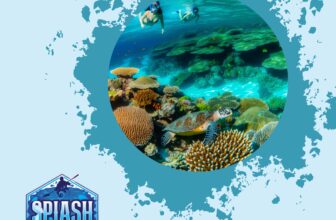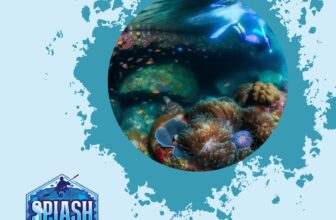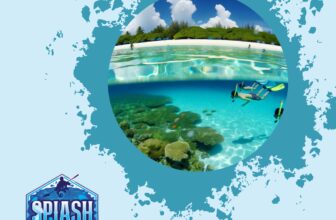
Scuba diving is a popular recreational activity for those who enjoy exploring the beauty of underwater worlds. The feeling of weightlessness and seeing diverse marine life in their natural habitats are some of the reasons why scuba diving is a thrilling experience. Numerous dive sites around the world attract divers from all walks of life, from beginners to seasoned professionals.
Defining Nitrox Scuba Diving
Nitrox scuba diving refers to a type of scuba diving that uses a gas mixture containing higher oxygen levels than what is found in regular air tanks. Typically, nitrox contains 32-36% oxygen instead of air’s typical 21% oxygen content.
The use of nitrox can offer longer bottom times and reduced risk of decompression sickness compared to traditional scuba diving with air alone. Additionally, divers report less fatigue after dives due to the lower nitrogen levels present in nitrox mixtures.
Nitrox scuba diving has become increasingly popular among divers as it allows them to push their limits further and explore underwater environments for longer periods without compromising their safety or health. Understanding how nitrox works, how to choose appropriate gas mixtures, and implementing proper safety precautions are essential components for enjoying this exciting form of underwater adventure.
Benefits of Nitrox Scuba Diving
Longer Bottom Times
One of the biggest benefits of using nitrox for scuba diving is the increased bottom time it allows. Nitrox, which is a mixture of nitrogen and oxygen with a higher percentage of oxygen than regular air, reduces the amount of nitrogen absorbed by the body during a dive.
The lower levels of nitrogen mean that divers can stay underwater for longer periods without worrying about decompression sickness. For example, let’s say you’re on a dive that requires you to come up after 40 minutes to avoid decompression sickness.
If you were using nitrox instead of air, you might be able to stay down for an hour or more without any risk. This extended bottom time allows divers to explore longer and see more underwater wonders.
Reduced Risk of Decompression Sickness
Decompression sickness (DCS), also known as “the bends,” is a serious condition that can occur when ascending too quickly from deep dives. It happens because nitrogen bubbles form in the bloodstream and tissues due to the rapid decrease in pressure as divers make their way back to the surface.
Nitrox diving can significantly reduce the risk of DCS because it has less nitrogen than traditional air mixes used in diving tanks. The reduced amount of nitrogen means less gas absorption by body tissues, resulting in fewer bubbles forming during ascent.
Less Fatigue After Dives
Diving can be physically demanding, and divers often report feeling tired after dives due to exposure to high levels of exertion and stress on their bodies while underwater. However, using nitrox instead of regular air mixtures can help reduce post-dive fatigue.
Because nitrox has less nitrogen than air mixtures, divers absorb fewer gases overall during their dives. This results in less buildup in their bodies which ultimately means less fatigue overall.
Overall, the benefits of nitrox scuba diving are numerous and can make for an enhanced underwater experience. With longer bottom times, reduced risk of decompression sickness, and less post-dive fatigue, divers can enjoy their underwater adventure to the fullest extent without worrying about physical limitations.
How Nitrox Scuba Diving Works
Nitrox diving is a type of scuba diving that involves the use of a gas mixture that has a higher percentage of oxygen and less nitrogen than regular air. This gas mixture, also known as Enriched Air Nitrox (EAN), allows divers to enjoy longer bottom times and reduced risk of decompression sickness compared to traditional scuba diving.
Explanation of the gas mixture used in nitrox diving
The gas mixture used in nitrox diving typically contains between 22% to 40% oxygen, with the remaining percentage being made up of nitrogen and other trace gases. By increasing the percentage of oxygen in the gas mixture, divers can stay underwater for longer periods without having to make decompression stops during their ascent. However, it’s important to note that using higher concentrations of oxygen can also increase their risk of experiencing oxygen toxicity.
The difference between air and nitrox diving
The main difference between air and nitrox diving lies in the composition of the breathing gas used during each activity. In traditional air diving, divers breathe compressed air consisting mostly (around 79%) nitrogen with around 21% oxygen and other trace gases such as argon or carbon dioxide. On the other hand, nitrox consists mostly (between 22% – 40%) oxygen with less nitrogen.
Nitrox is beneficial for those who want to dive deeper for longer because it reduces their risk of developing decompression sickness by decreasing their nitrogen intake while allowing them to spend more time underwater. Nitrogen saturation can cause ’the bends’ if ascension is too rapid since excess nitrogen turns into bubbles within tissues resulting in injury or even death but this does not happen with Nitrogen intake cut down via Nitrox mixtures.
Understanding how nitrox works is essential before attempting any dives since some risks are involved with its use. However, with proper training and certification, divers can enjoy longer bottom times and reduced risk of decompression sickness which is a boon for scuba enthusiasts worldwide.
Choosing the Right Nitrox Mixture
Nitrox diving requires the use of a specific gas mixture with a higher concentration of oxygen than regular air. However, not all nitrox mixtures are created equal, and divers must carefully choose the right mixture based on several factors. The most important factor is depth, as different nitrox mixtures are suitable for different depths.
Generally speaking, the deeper you dive, the lower your percentage of oxygen should be to avoid oxygen toxicity. Other factors to consider when choosing the right nitrox mixture include your diving experience level and physical condition.
More experienced divers may be able to handle a lower percentage of nitrogen in their nitrox mixtures, whereas less experienced divers may need higher percentages for safety reasons. Additionally, some physical conditions like asthma or high altitude sickness can impact your body’s ability to process gases properly and may require adjustments to your nitrox mixture.
Importance of Analyzing Gas Mixtures Before Diving
Once you’ve chosen your desired nitrox mixture, it’s crucial to analyze it before diving. Nitrox diving requires precise calculations and measurements of gas concentrations in order to ensure safety underwater.
A small mistake in measuring gas concentrations or ratios can have serious consequences. To analyze a nitrox mixture before diving, you will need a specialized tool called an analyzer that can measure the specific levels of oxygen and nitrogen present in the gas mixture.
Analyzers use either electrochemical sensors or infrared sensors to detect gas concentrations accurately. Regularly analyzing your nitrox mixtures before each dive is essential for maintaining maximum safety during underwater excursions.
It’s also important to note that some dive shops offer pre-mixed and analyzed nitrox tanks for rent or purchase if you do not have access to an analyzer yourself. By taking these precautions seriously and choosing safe mixtures for your individual needs, you can safely enjoy all the benefits that nitrox scuba diving has to offer.
The Importance of Proper Training and Certification
Nitrox diving requires additional training and certification compared to regular scuba diving. It is important to ensure that you are adequately trained before attempting a nitrox dive, as the increased oxygen levels in the gas mixture can lead to complications if not handled properly.
Certification involves both theoretical and practical training, including proper handling of equipment, analysis of gas mixtures, and emergency procedures specific to nitrox diving. It is important to choose a reputable training center and instructor who will provide comprehensive instruction on all aspects of nitrox diving.
Pre-Dive Safety Checks and Procedures
Before each dive, it is crucial to conduct thorough safety checks on all equipment, particularly the tanks containing the nitrox gas mixture. This includes checking for any leaks or damage that could compromise the safety of the dive. Additionally, it is essential to analyze the gas mixture in each tank before use.
This involves measuring the percentages of oxygen and nitrogen in the mixture using specialized equipment. It is important to ensure that each tank contains the correct gas mixture as specified by your dive plan.
Emergency Protocols in Case of Oxygen Toxicity or Other Accidents
Despite careful planning and preparation, accidents can still occur during a nitrox dive. One potential complication is oxygen toxicity, which occurs when too much oxygen enters the body. Symptoms can include convulsions or loss of consciousness.
It is important for divers to be aware of emergency protocols specific to nitrox diving so they can respond quickly and effectively if an accident occurs. This may involve administering emergency oxygen or initiating decompression procedures.
Overall, proper training and certification, thorough safety checks before each dive, and knowledge of emergency protocols are essential for safe nitrox diving. By following these precautions, divers can enjoy longer bottom times with reduced risk of decompression sickness while minimizing potential complications from heightened oxygen levels.
Conclusion
Nitrox scuba diving is a popular and beneficial alternative to traditional air diving. The use of a higher percentage of oxygen in the gas mixture allows for longer bottom times, reduced risk of decompression sickness, and less fatigue after dives.
It is important to choose the right nitrox mixture based on factors such as depth and dive duration, and to analyze gas mixtures before diving. Safety precautions are crucial for nitrox diving, including proper training and certification, pre-dive safety checks and procedures, and emergency protocols in case of accidents or oxygen toxicity.
Despite these precautions, nitrox diving remains a popular choice among divers around the world. Some of the most popular dive sites for nitrox diving include wrecks such as the USS Oriskany off the coast of Florida and coral reefs like those found in Palau.
These sites offer unique features and attractions that make them a must-visit destination for divers looking to test their skills with nitrox scuba diving. Overall, if you’re an experienced scuba diver looking to take your underwater adventures to the next level, then exploring the world of nitrox scuba diving is definitely worth considering.
With its many benefits and growing popularity among divers worldwide, it’s not hard to see why so many people are excited about this exciting alternative form of scuba diving. So don’t be afraid to give it a try – you just might discover your new favorite way to experience life beneath the waves!







